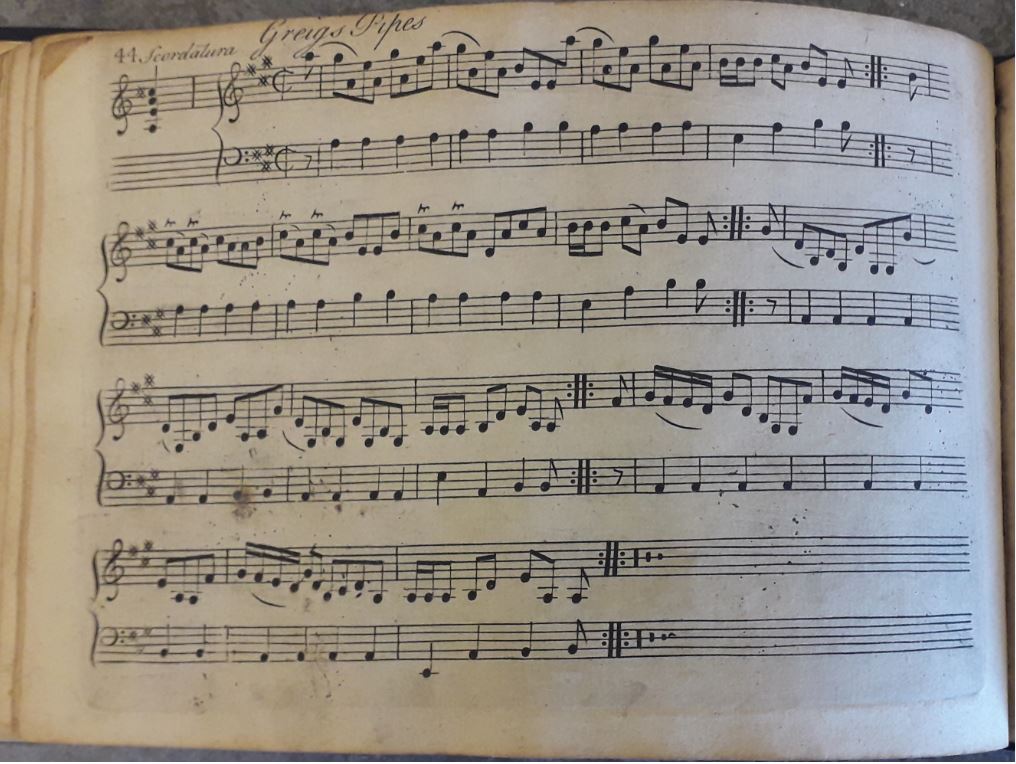Scordatura
John Glen is often regarded as the principal source for James Greg’s authorship of “Greg’s Pipes”, but Greg’s authorship was already recorded in an obituary* published soon after his death in 1817. Glen gives it as having been published in the Stewart Collection of 1761, and that would make the Stewart Collection the earliest published source of the four part tune. Fleischmann does not include this: his first setting is dated 1772, from Longman, Lukey and Co.
Longman, Lukey and Co. indicate that <ae’a’e’’> scordatura is to be used, and that is the type of scordatura used ever since both in Scotland, Ireland and Nova Scotia. However, this may not have been the type of scordatura originally intended by the composer, James Greg. In the Stewart Collection, thought to be the first publication following its composition, <ae’a’c♯’’> is the type of scordatura indicated.

“Greig’s Pipes” in the Neil Stewart MS 1761
It might first appear that this was chosen to facilitate open string chording on the c♯’’ and a’ strings, but this does not seem to be the case, as repeated trilling on a second finger c♯’’, coupled with “slur and cut” bowing, is indicated in the manuscript. Whatever about this tuning being suited to the second part, <ae’a’e’’> scordatura would seem to be better suited to the other three parts, and in fact <ae’a’c♯’’> scordatura would make the Sutherland six part setting, which we shall come to later, almost impossible to play with ease. When, however, we examine the bowing shown on the Stewart manuscript, it would appear that <ae’a’c♯’’> scordatura was chosen rather to facilitate the bowing of the first part, where a type of fore-phrasing known as Georgia bow is the bowing indicated. The repeated trilling on the c♯’’ may show the composer’s particular interest in his part, and may be the genesis of the whine effect that has come to be associated with that part, be it on the c♯’’ when played in A, on the b’ when played in G, or on the f♯’’ when played in D. In fact, at least in Ireland, that second part, or the corresponding part wherever it occurs, has become the keynote part of the tune, and the first played in the most popular version, known as “Creig’s Pipes”.
